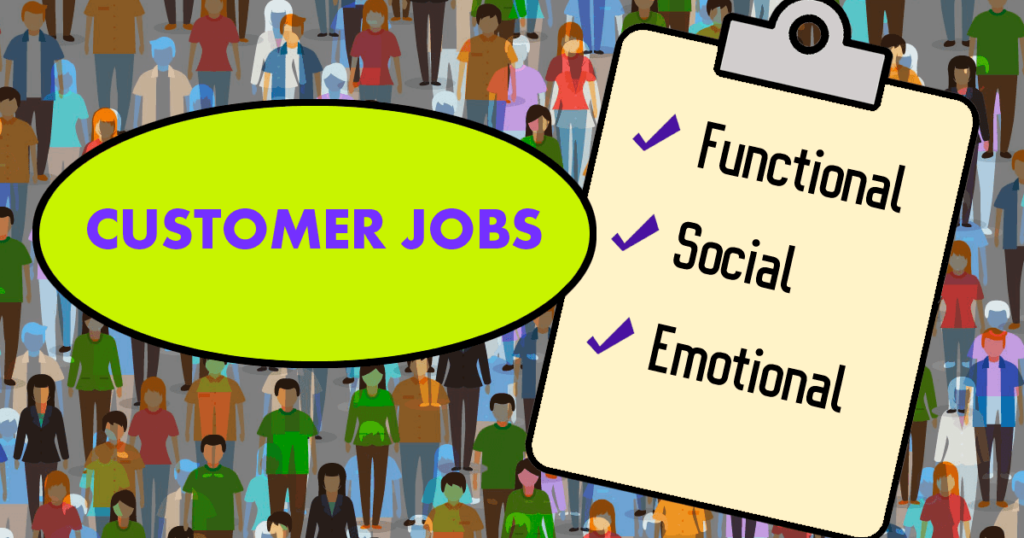Exploring Customer Jobs
Rick Gregg August 24,2024 What do you think?

Source: freepik.com, The saasmvp Project
Your first Customer Profile results from your initial assumptions about your innovative product and service. These assumptions are then tested by you for accuracy in the customer discovery and validation process. As Steve Blank has famously said “no business plan survives first contact with a customer.” You are no different.
The Customer Profile
In Alexander Osterwalder’s ground breaking book, Value Proposition Design, the Customer Profile describes a specific customer segment in your business model in a more structured and detailed way. You may have more than one customer segment which requires its own profile. The Customer Profile breaks the customer down into its jobs, pains and gains. Consider:
- Jobs. Customer jobs describe what customers are trying to get done in their work, and in their lives, as expressed in their own words. Make sure you take the customer’s perspective when investigating jobs. What you think of as important from your perspective might not be a job customers are trying to get done!
- Pains. Customer pains describe bad outcomes, risks, and obstacles related to customer jobs.
- Gains. Customer gains describe the outcomes customers want to achieve or the concrete benefits they are seeking.
Customer Jobs
We begin our development of the Customer Profile by considering Customer Jobs. One of the best frameworks is the “jobs-to-be-done” theory popularized in the book Competing Against Luck by the late Clayton Christensen, a Harvard Business School professor and thought leader. The foundational principle is that people “hire” products and services to deliver three basic needs: functional value (e.g. it will save you time), social value (e.g. it will impress your friends), and emotional value (e.g. it will bring you joy). These three dimensions of value are present in every decision we make about whether to buy or try something new.
- Functional. When your customers try to perform or complete a specific task or solve a specific problem, that’s a functional job. For example, how warm and dry you feel when wearing a jacket you are considering for purchase.
- Social. When your customers want to be perceived by others in a favorable way or gain power or status, that’s a social job. For example, what does the style and brand of the jacket tell you about the purchaser? (fashion conscious, wealthy, earthy, hipster, etc.)
- Emotional. When your customers seek a specific emotional state, such as the feeling of job security in the workplace, that’s an emotional job. For example, how do you feel about yourself when you wear the jacket (and even when it’s hanging in your closet).
The past few blog posts have discussed in detail four human frictions (inertia, effort, emotion, and resistance) that prevent someone from adopting your innovative product or service. We will evaluate the impact of the four frictions when discovering and validating your customer’s functional, social and emotional jobs.
The saasmvp Project is dedicated to helping SaaS Entrepreneurs who want to create a repeatable SaaS business model and Minimum Viable Product (MVP) that generates revenue with minimal financial risk. We’re excited to help you discover your ideal SaaS customer profile and can’t wait to see what you build! Let me know what you think.